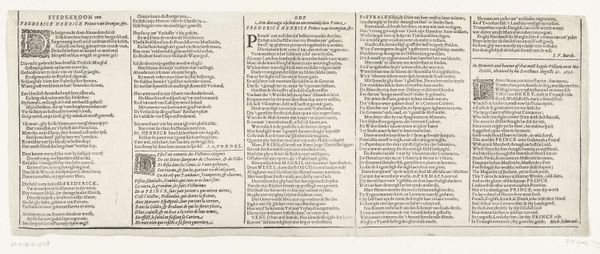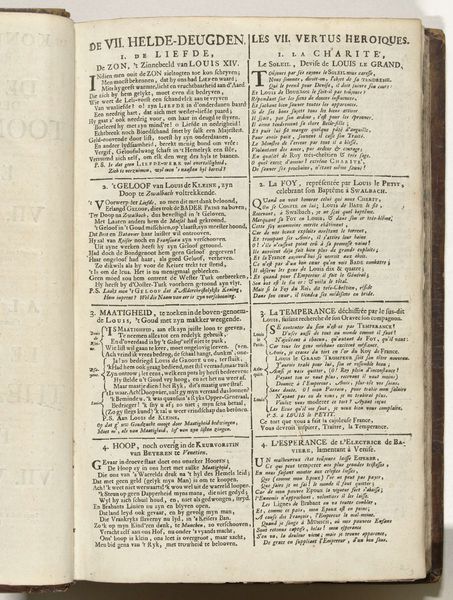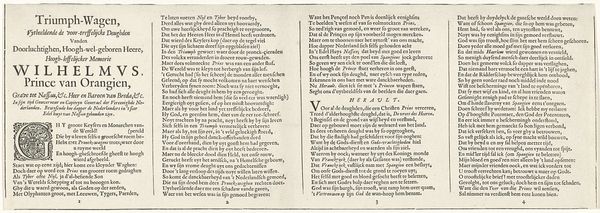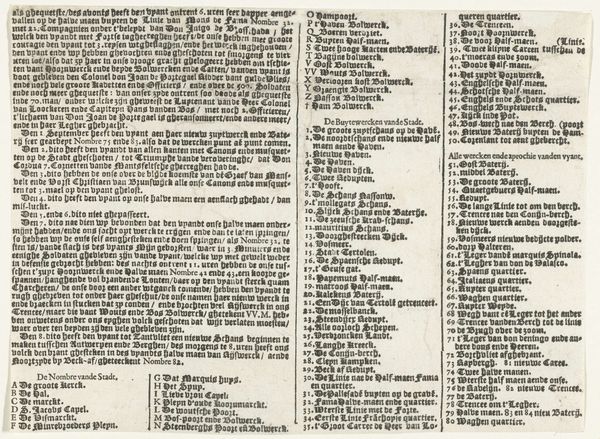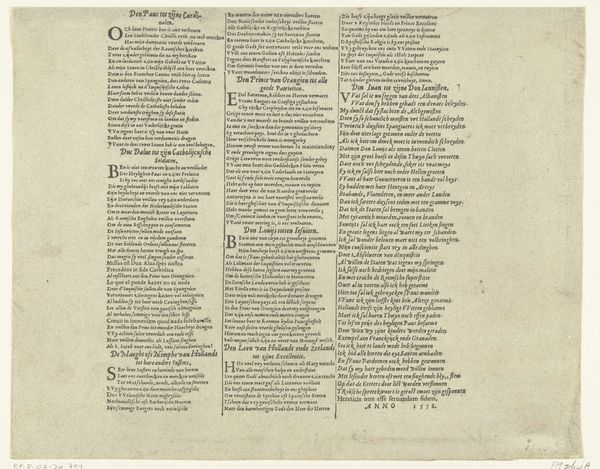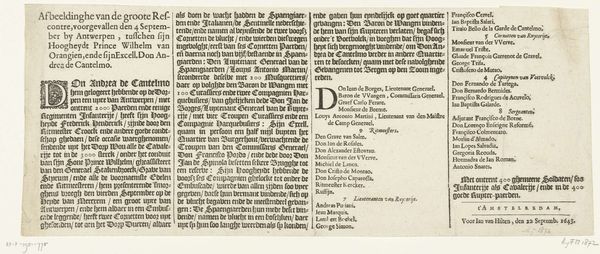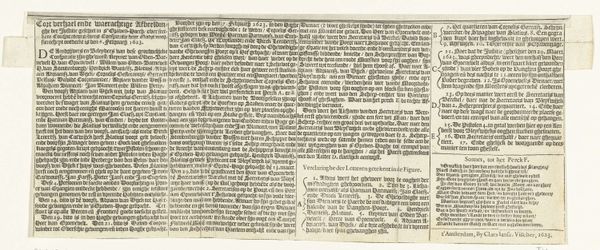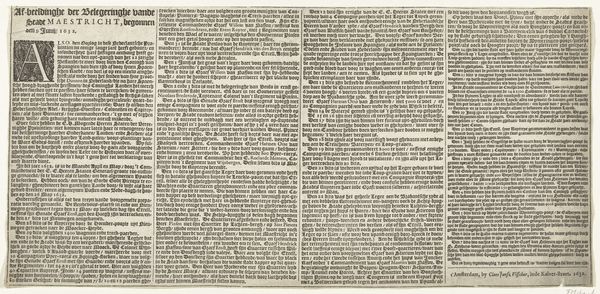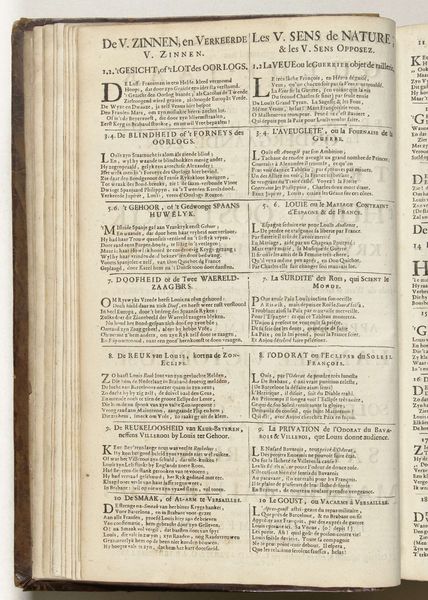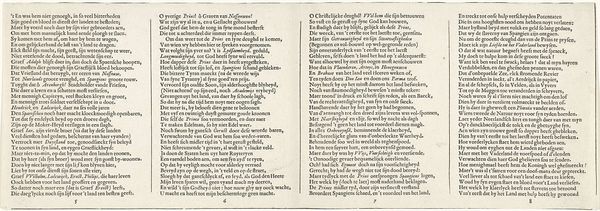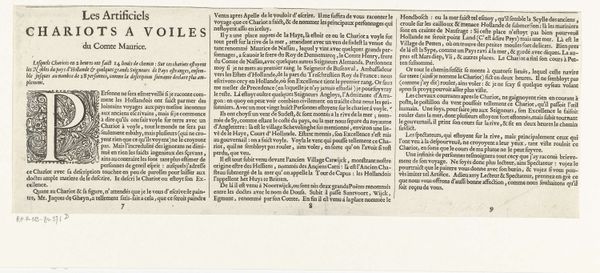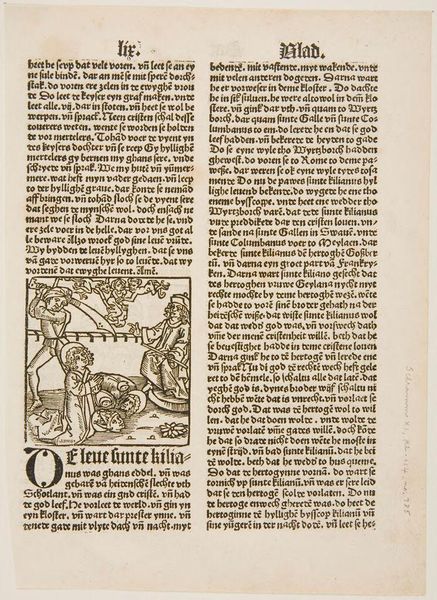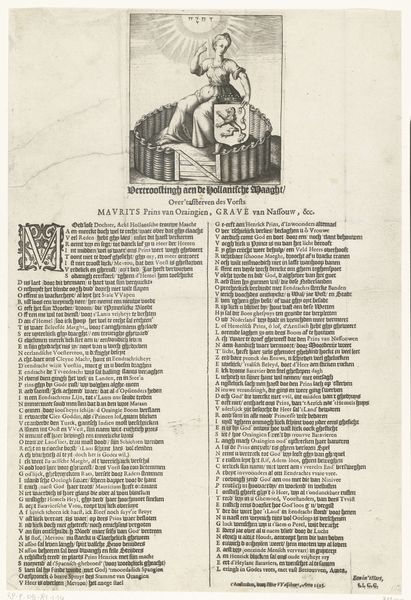
Tekstblad bij de prent van de vervolging van de Waldenzen in de Piemonte, 1655-1663 1655 - 1663
0:00
0:00
print, paper, engraving
#
baroque
# print
#
paper
#
text
#
history-painting
#
engraving
Dimensions: height 189 mm, width 386 mm
Copyright: Rijks Museum: Open Domain
Curator: So, this unassuming sheet of paper at the Rijksmuseum—entitled "Tekstblad bij de prent van de vervolging van de Waldenzen in de Piemonte, 1655-1663"—it's really a punch in the gut. Anonymous, but its voice booms across centuries. What grabs you first? Editor: It's, well, it's a wall of text, isn't it? Immediately intimidating. Baroque, the metadata says, and definitely… dense. What’s the story it tells? How can you even approach something like this? Curator: Think of it as a song—a lament, maybe. This isn't just typography; it's an engraved emotional response to historical trauma. These are descriptions of the persecution of the Waldensians. I see urgency. Words crammed together, fighting for space to be heard. Can you feel the desperation behind it? Editor: Desperation, yes, I see that now, how it all presses together. The "style" comes from the density, not ornamentation or… flourishes. What impact would this sheet have had at the time, outside a museum? Curator: Huge. Print was a weapon. Think of it being read aloud, spreading like wildfire. See, the format gives it incredible intimacy; its small scale enables individual consumption and circulation. It documents atrocity but offers hope. Its design isn't simply information but moral argument. Can art change history? Editor: So, its very physical form – the packed text, the cheap paper – was part of its power… Curator: Exactly. Ephemeral yet enduring. Think of all those voices carrying these words. The design amplifies and accelerates those stories across generations, and to us. Editor: So much history hiding in plain sight, it’s amazing. The lettering now even seems appropriate. Curator: The “wall of text” almost screams for justice. These forgotten testimonies should have a physical and tangible weight to reflect the human impact of persecution.
Comments
No comments
Be the first to comment and join the conversation on the ultimate creative platform.
